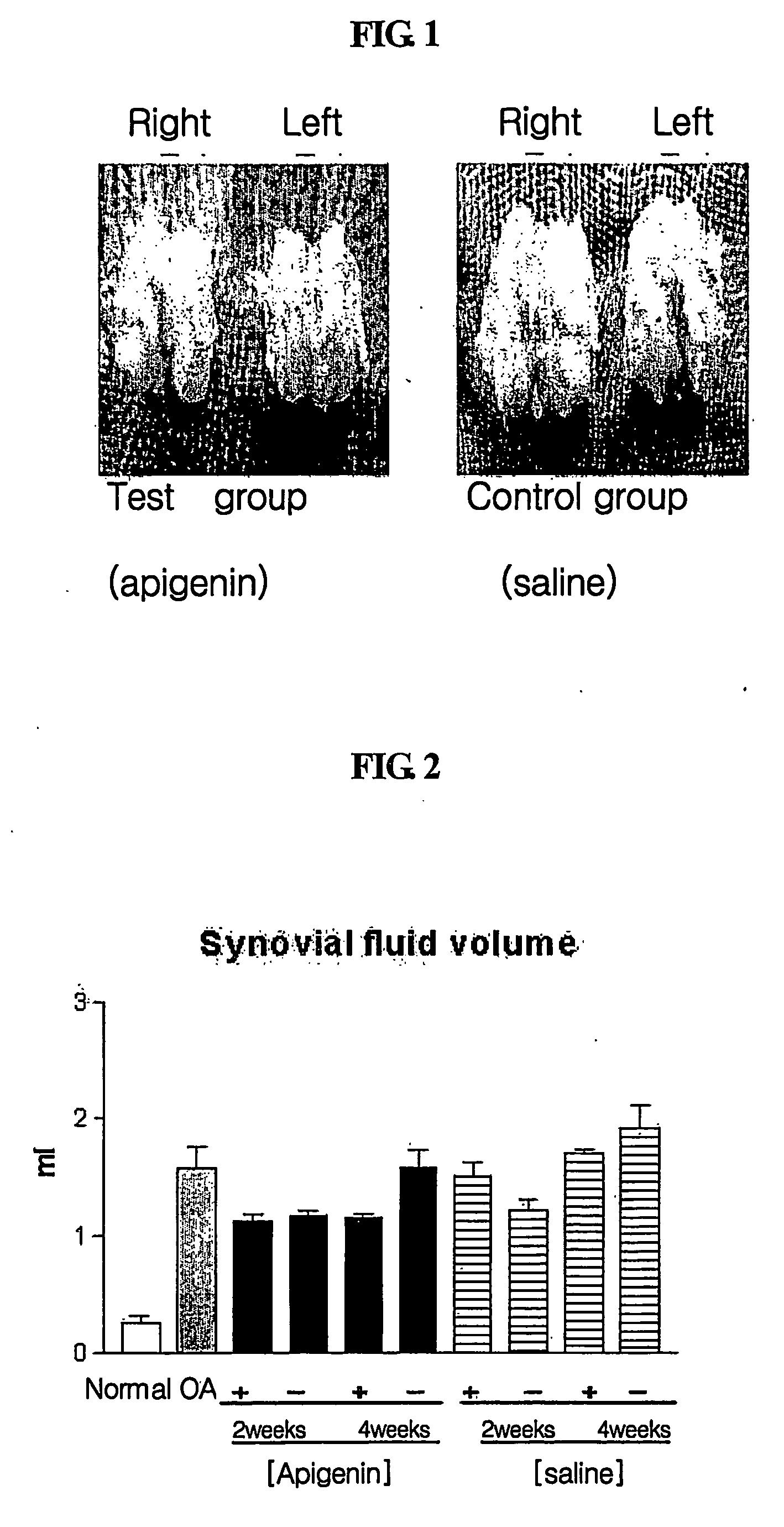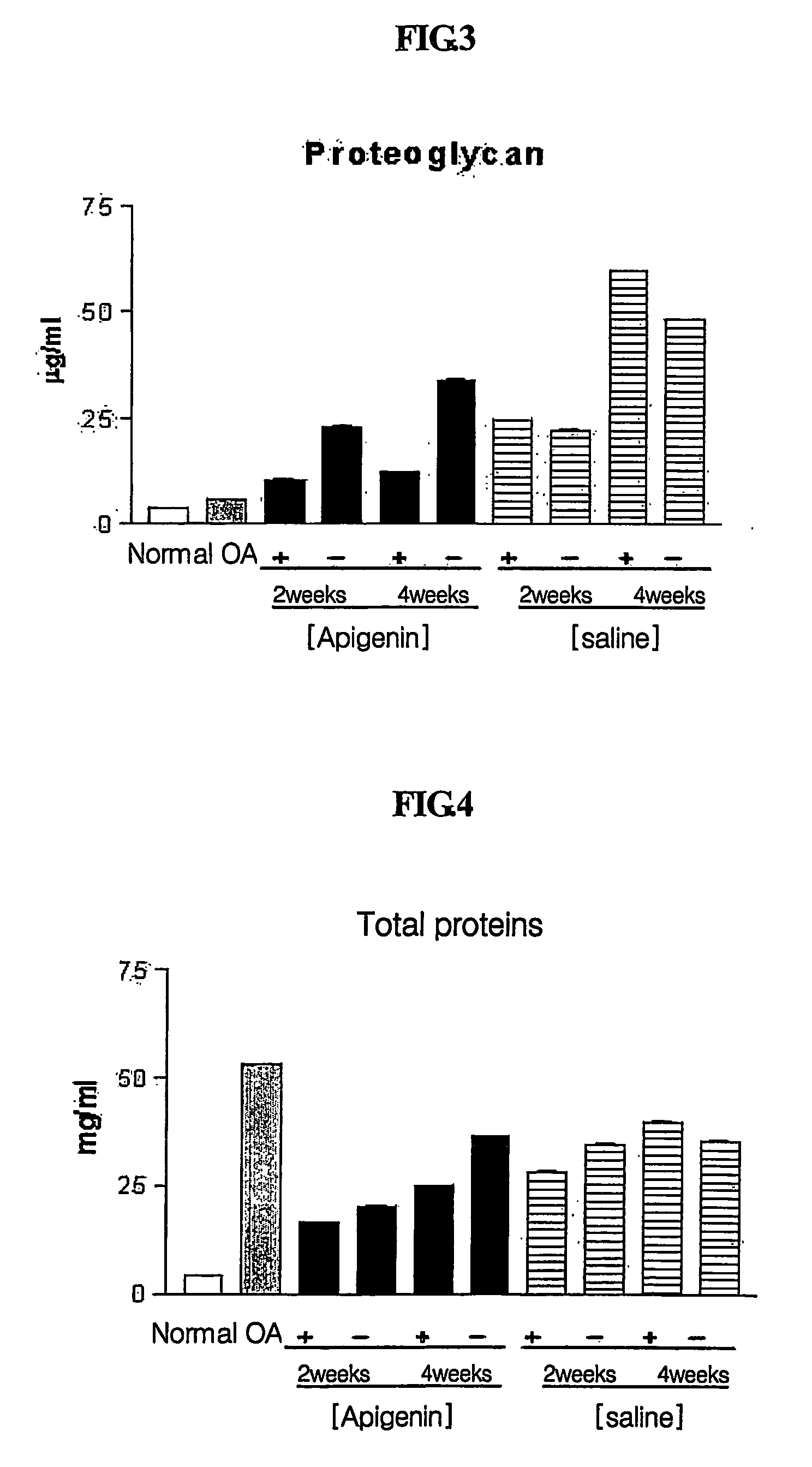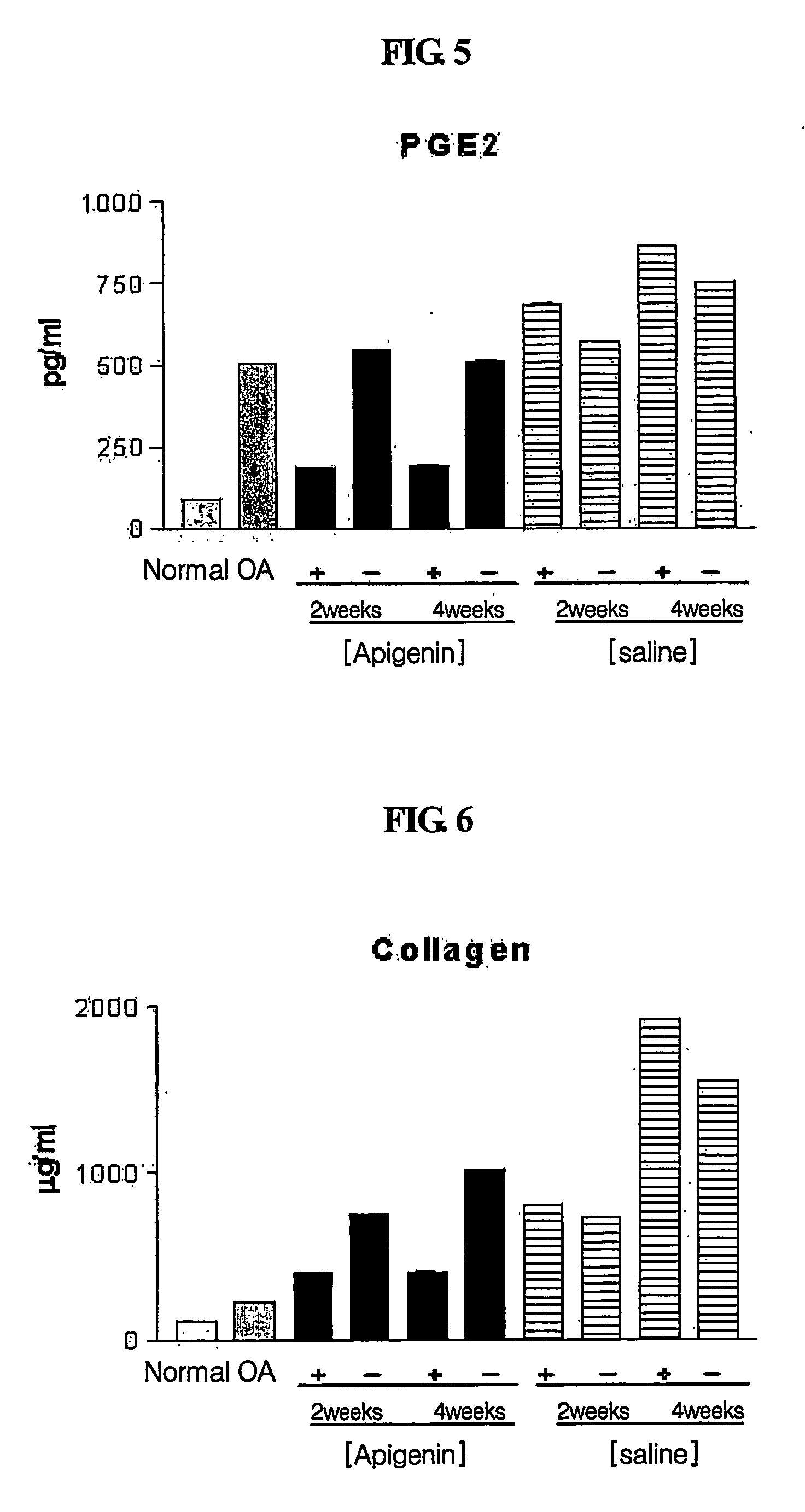Composition for treatment of osteoarthritis containing apigenin as chondroregenerative agent
a technology of apigenin and chondroregenerative agent, which is applied in the field of composition for the treatment of osteoarthritis, can solve the problems of a large number of joints being affected, a higher frequency of hip joint invasion, and a weak muscle strength, and achieves excellent anti-inflammatory
- Summary
- Abstract
- Description
- Claims
- Application Information
AI Technical Summary
Benefits of technology
Problems solved by technology
Method used
Image
Examples
example 1
The Antiproliferative and Cytotoxic Effects of Apigenin
[0092] Apigenin is known to have antiproliferative and cytotoxic effects on tumor cells as well as normal cells. Thus, to achieve the chondrocyte-proliferating effect of apigenin according to the present invention, apigenin was evaluated for its cytotoxicity on chondrocytes in vitro.
[0093] To determine the concentrations of apigenin effective for exerting its antiproliferating and cytotoxic effects on chondrocytes, IC50 values were measured in chondrocytes isolated from the cartilage of New Zealand white rabbits. In brief, chondrocytes were isolated from normal cartilage of the rabbits by collagenase treatment, and treated with apigenin in various concentrations of 1, 10, 20, 30, 40, 50, 100 and 200 μM (containing lower than 0.05% DMSO). During culturing, on Days 1, 2, 4 and 6, IC50 values were measured by a MTT assay based on cell viability.
[0094] As a result, IC50 values for apigenin on a primary culture of the rabbit chond...
example 2
Osteoarthritis Induction in an Experimental Animal
[0097] To prepare an osteoarthritis animal model, New Zealand white rabbits underwent anterior cruciate ligament transection (ACLT) in joints of their two hind legs. After three days, the rabbits were forced to sustain movement for four weeks in a space of 5×5 m3 to induce substantial osteoarthritis. 50 μg of apigenin (A3145, Sigma) was administered a total of four times (once per week for four weeks) to affected right legs of the osteoarthritis-induced rabbits. An injectable preparation of apigenin was prepared by dissolving 50 μg of apigenin in a mixture of 50 μl of DMSO (dimethylsulfoxide) and 450 μl of physiological saline. Affected left legs were used as a control for the affected right legs, and injected with 450 μl of a physiological buffer, PBS, containing 50 μl of DMSO so as to compare to the effects of apigenin. One week after apigenin was administered in Week 2 and Week 4 after osteoarthritis induction, joint synovial flu...
example 3
Measurement of Total Joint Synovial Fluid Volume
[0099] Typically, synovial fluid volume increases with inflammation as osteoarthritis progresses. Before osteoarthritis (OA) induction (normal state) and one week after apigenin was administered in Week 2 and Week 4 after osteoarthritis induction, synovial fluids were collected and centrifuged to remove blood cells and other cells. The supernatants were used in this test.
[0100] Since synovial fluid volume has been reported to change according to the progress of osteoarthritis, total synovial fluid volume was measured to investigate changes in synovial fluids according to osteoarthritis induction and drug treatment. Synovial fluid volume was determined by measuring Ca2+ concentrations in synovial fluids using an Arsenazo III complexion method (Michaylova V. et al., Anal. Chim. Acta, 53:194 (1971)). Total synovial fluid volume was calculated using a Donnan equilibrium equation. 0.01 ml of a synovial fluid was mixed with 1 ml of an Arse...
PUM
| Property | Measurement | Unit |
|---|---|---|
| volume | aaaaa | aaaaa |
| volume | aaaaa | aaaaa |
| volume | aaaaa | aaaaa |
Abstract
Description
Claims
Application Information
 Login to View More
Login to View More - R&D
- Intellectual Property
- Life Sciences
- Materials
- Tech Scout
- Unparalleled Data Quality
- Higher Quality Content
- 60% Fewer Hallucinations
Browse by: Latest US Patents, China's latest patents, Technical Efficacy Thesaurus, Application Domain, Technology Topic, Popular Technical Reports.
© 2025 PatSnap. All rights reserved.Legal|Privacy policy|Modern Slavery Act Transparency Statement|Sitemap|About US| Contact US: help@patsnap.com



